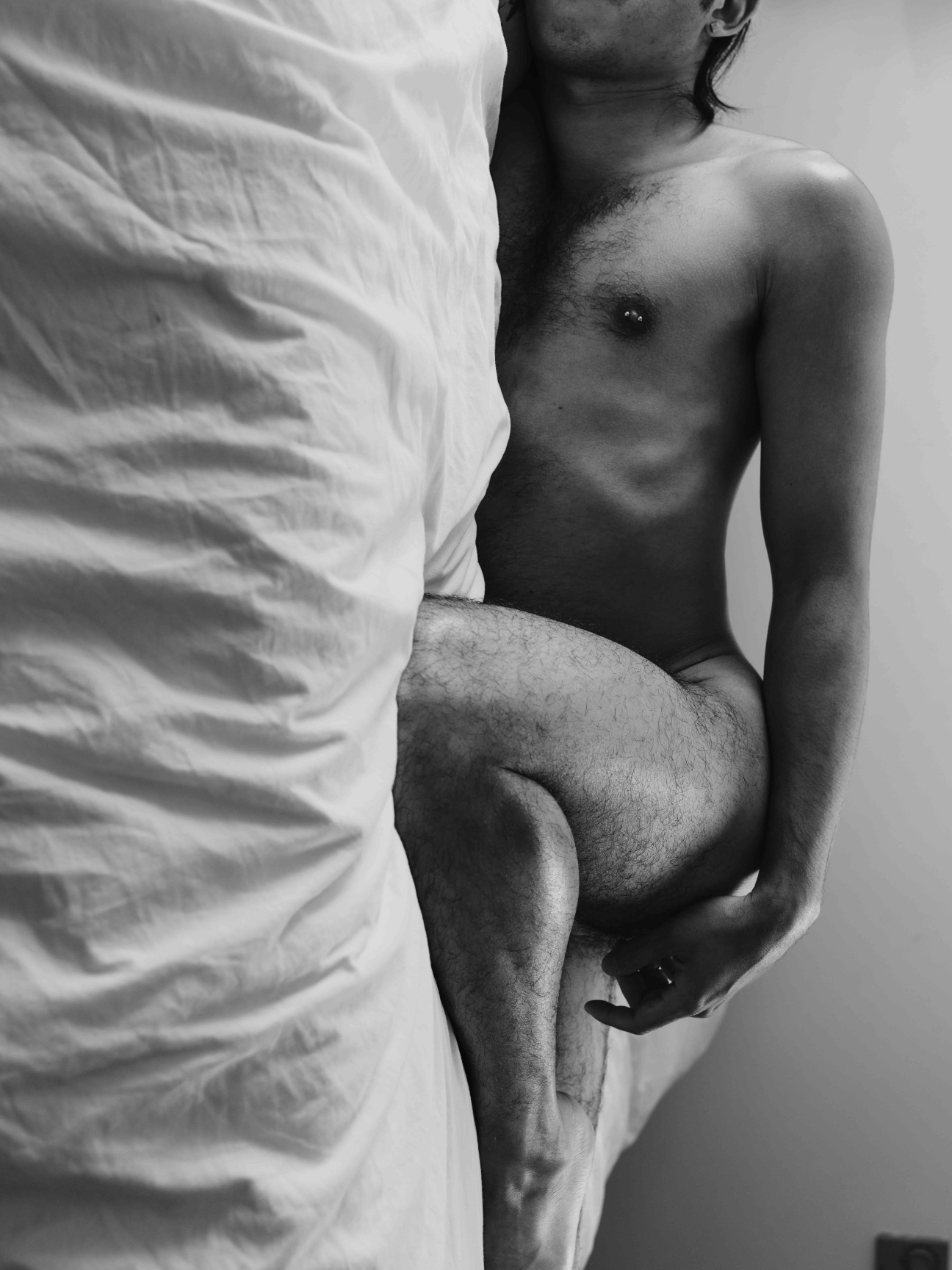
Home is a delicate concept for Ricardo Nagaoka. “I’m Japanese, and I look Asian, but culturally I’m more Latino. My parents grew up in Paraguay, then we moved to Toronto,” says the 30-year-old photographer. “A lot of how I function as an artist stems from this upbringing.”
From their current perch in an airy studio in Portland, Oregon, Nagaoka appreciates the layered complexities of this multivalent upbringing. But it led to a number of delayed revelations around their own sexuality and gender fluidity that only surfaced when the photographer entered their 20s. “That was when I stopped avoiding these questions, Why am I the way I am? What don’t I know about myself?”
This inquiry is at the heart of Nagaoka’s practice now, although it wasn’t at first. After studying photography at the Rhode Island School of Design, Nagaoka moved to Portland, taking on documentary work for the New York Times. Photojournalism remains an outlet, but it proved unfulfilling. “I wanted to reflect something a bit odder about the world and myself,” they recall.
Like any journey of self-discovery, there were plenty of enlightening dead ends—a few years spent documenting Paraguay’s Japanese communities allowed Nagaoka to reconnect with a facet of their culture, but raised ethical questions around subjecthood and exploitation that were at odds with their introspective sensibility.
An exploration of cis masculinity unearthed the photographer’s own buried preconceptions, but fell to the side when the artist developed a more nuanced understanding of their own gender. Eventually, they settled on a practice of visual autofiction.
For Nagaoka, this process offers the possibility of self-actualization in real time. Through the photographer’s carefully orchestrated and sensual domestic scenes, friends drop their guard, allowing the plurality of their identities (Asian, Latino, cis, trans, fem, masc) to curl around each other without fighting for dominance.
“There’s this pressure to express yourself fully when you’re out in public. But so much daydreaming and growth happens when we’re alone with ourselves.” The images are powerful, quiet, and thrumming with desire—not sexual desire, but “the desire to be whole.”
This is a difficult perspective to articulate visually, especially in a culture with a strong appetite for identity markers. “People think my work is about Asian masculinity or queerness, but it doesn’t stand for any one community. Everyone’s their own contradiction, and I want to make work that lives within that.”
When Nagaoka considers the future, it’s with anticipation. “I’ve learned how expansive personhood is. How do I use that freedom?” says the artist. A full-time move to Los Angeles is on the horizon, along with a more deliberate foray into the gallery world.
But above all, Nagaoka reserves the right not to know. “There are days where I’m like, Are people going to understand what I’m trying to say? In those moments of weakness, I always return to this process,” they explain, “of becoming a whole person.”
Want to meet more rising stars? See CULTURED's full list of 2023 Young Photographers here.










 in your life?
in your life?

